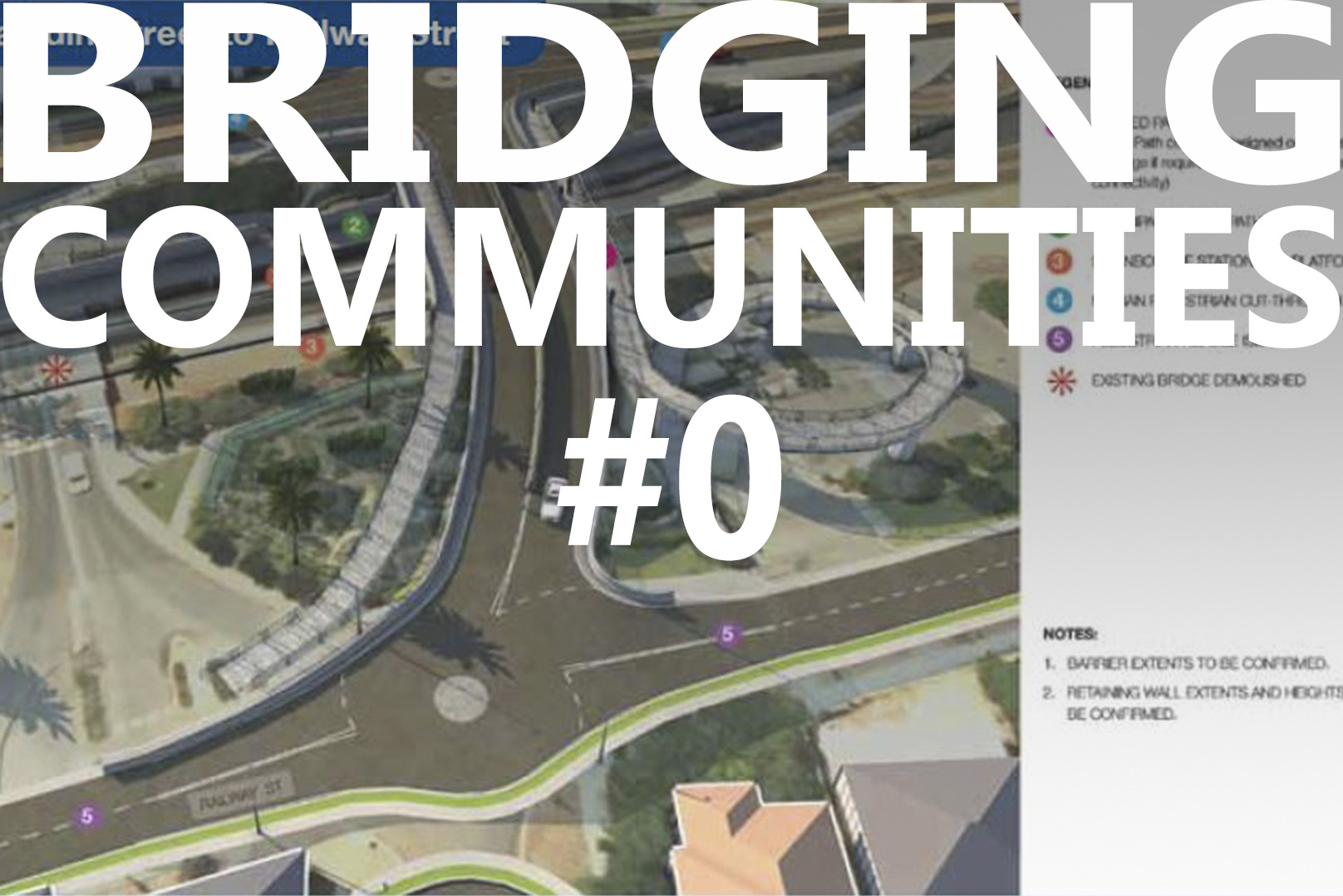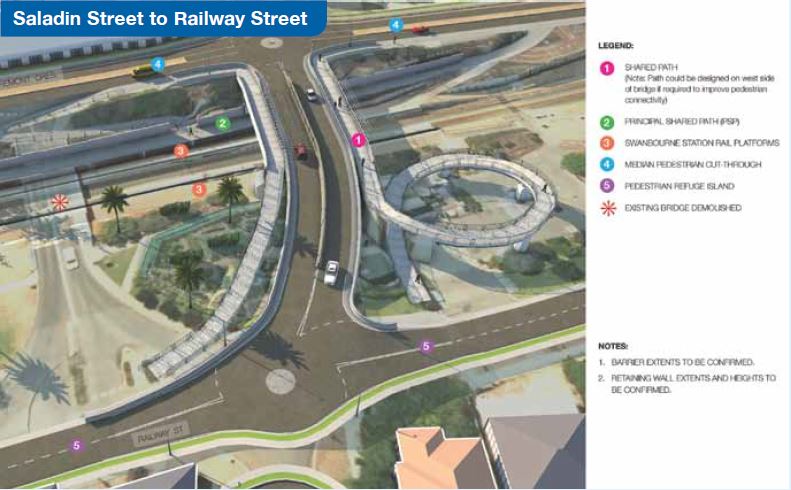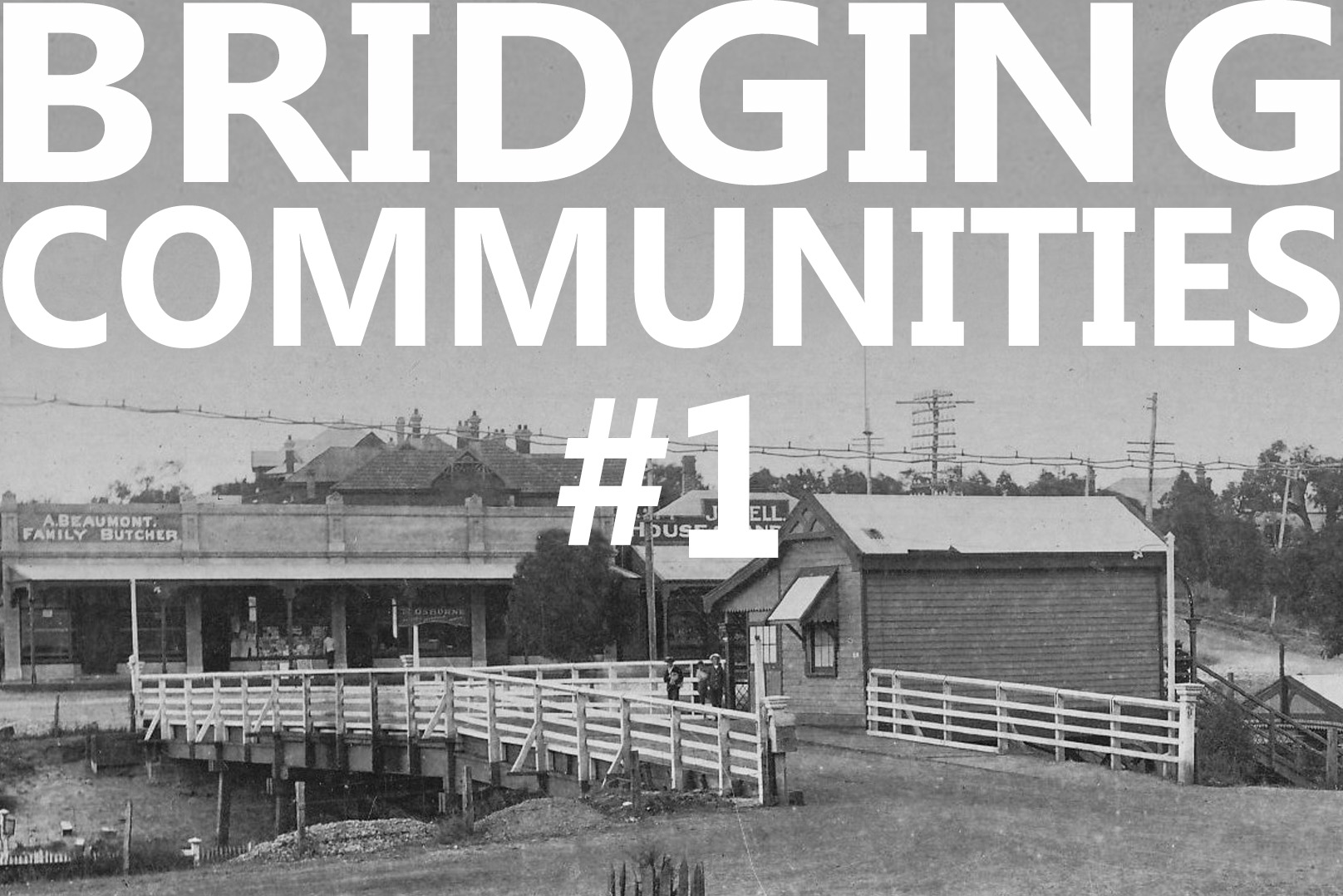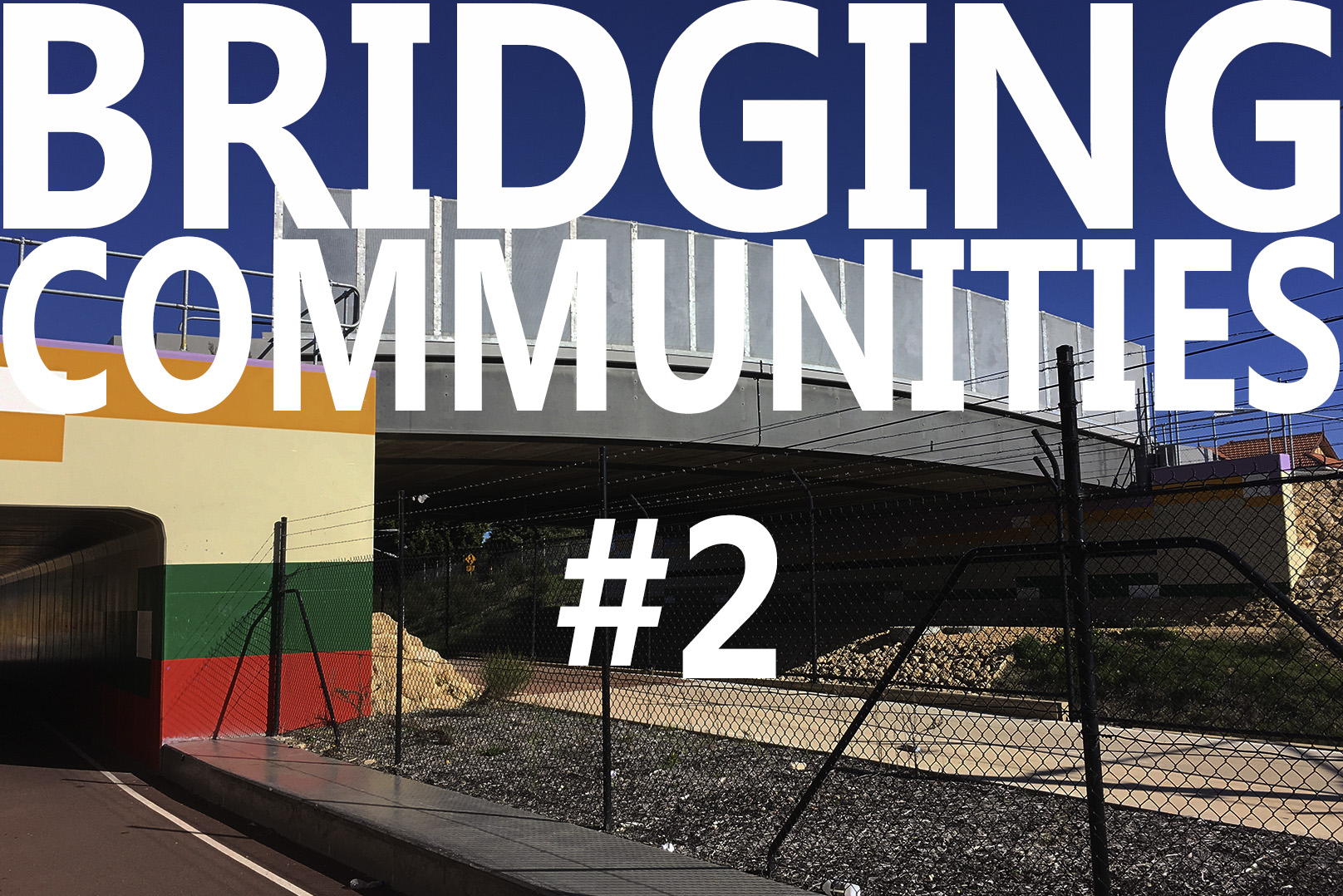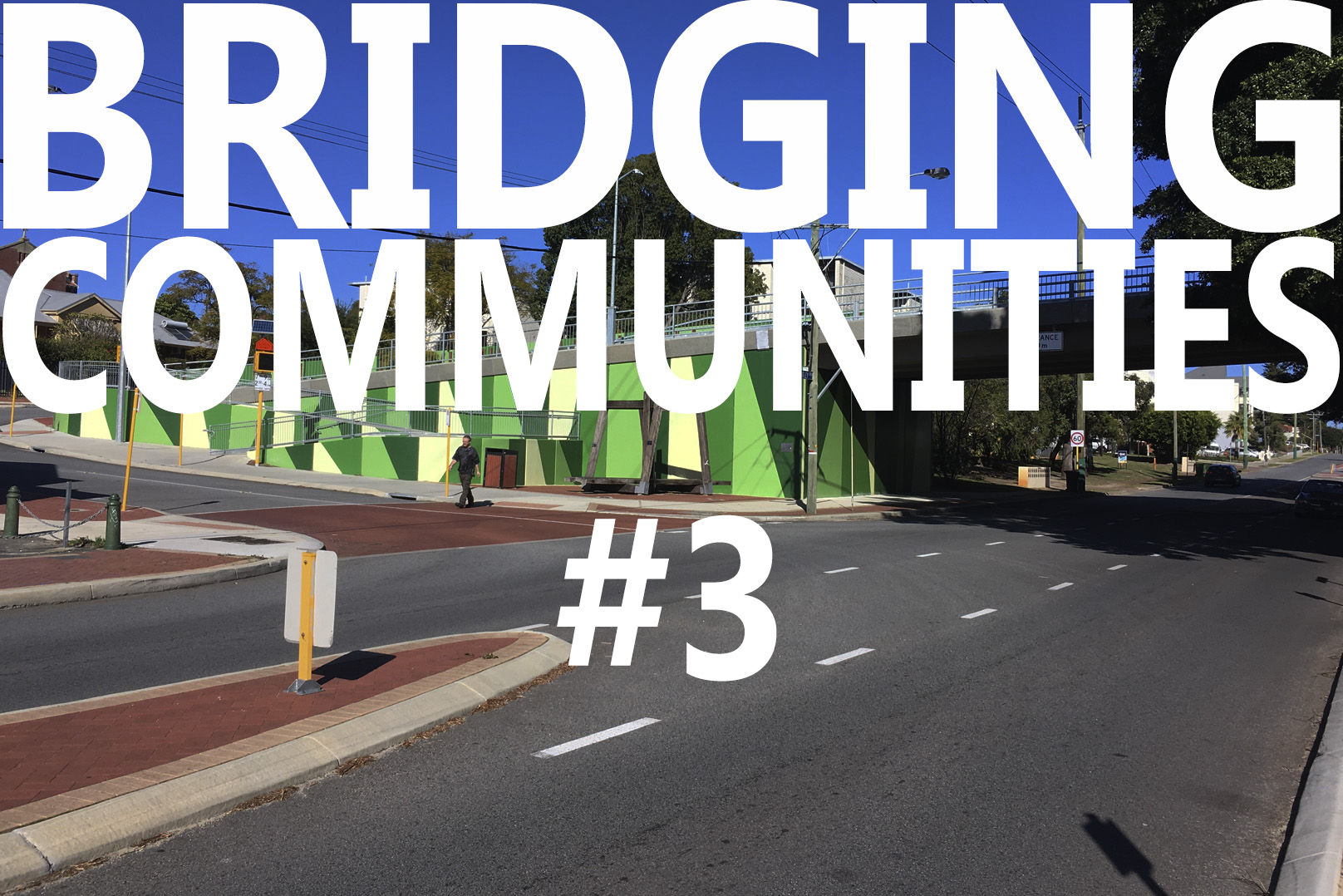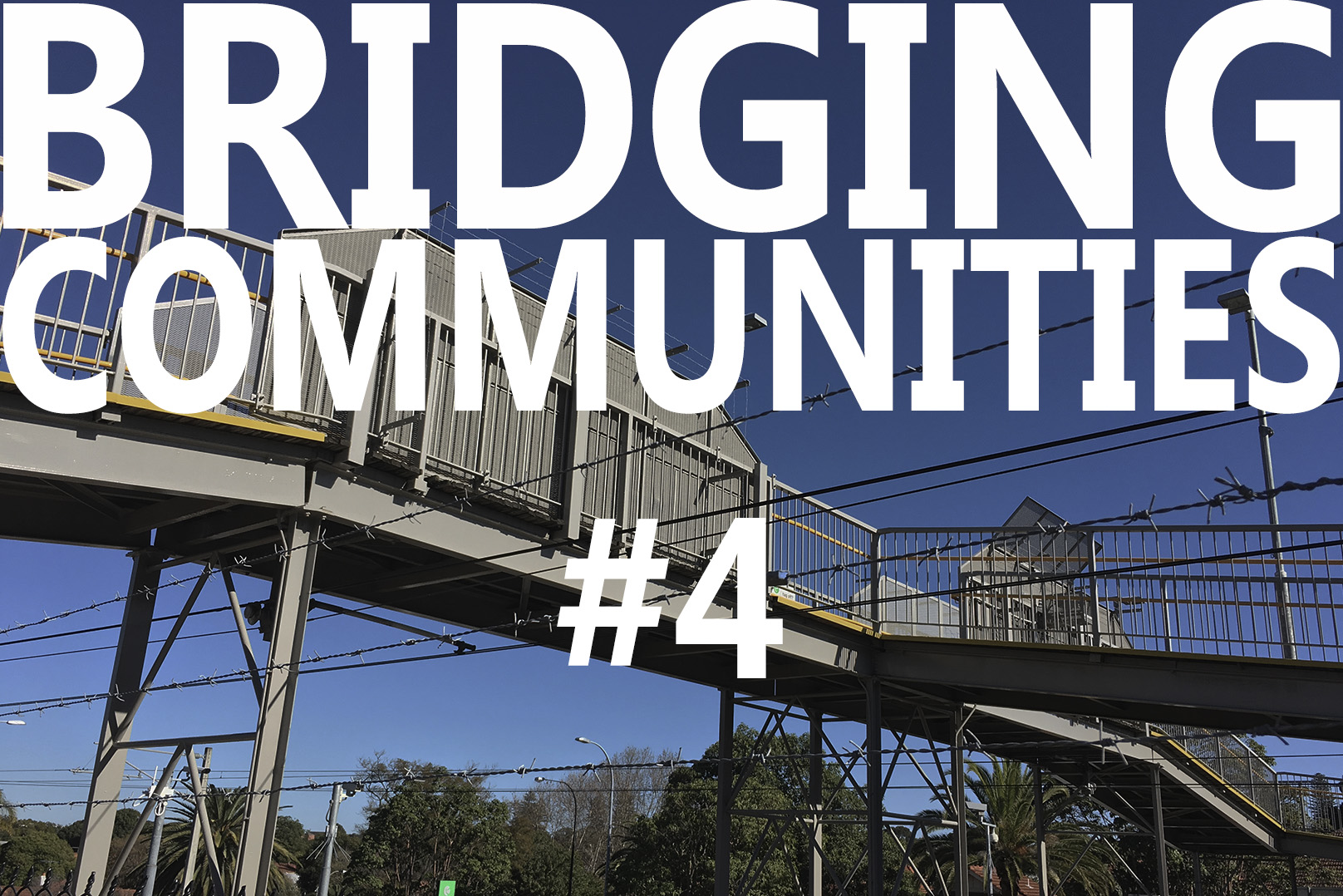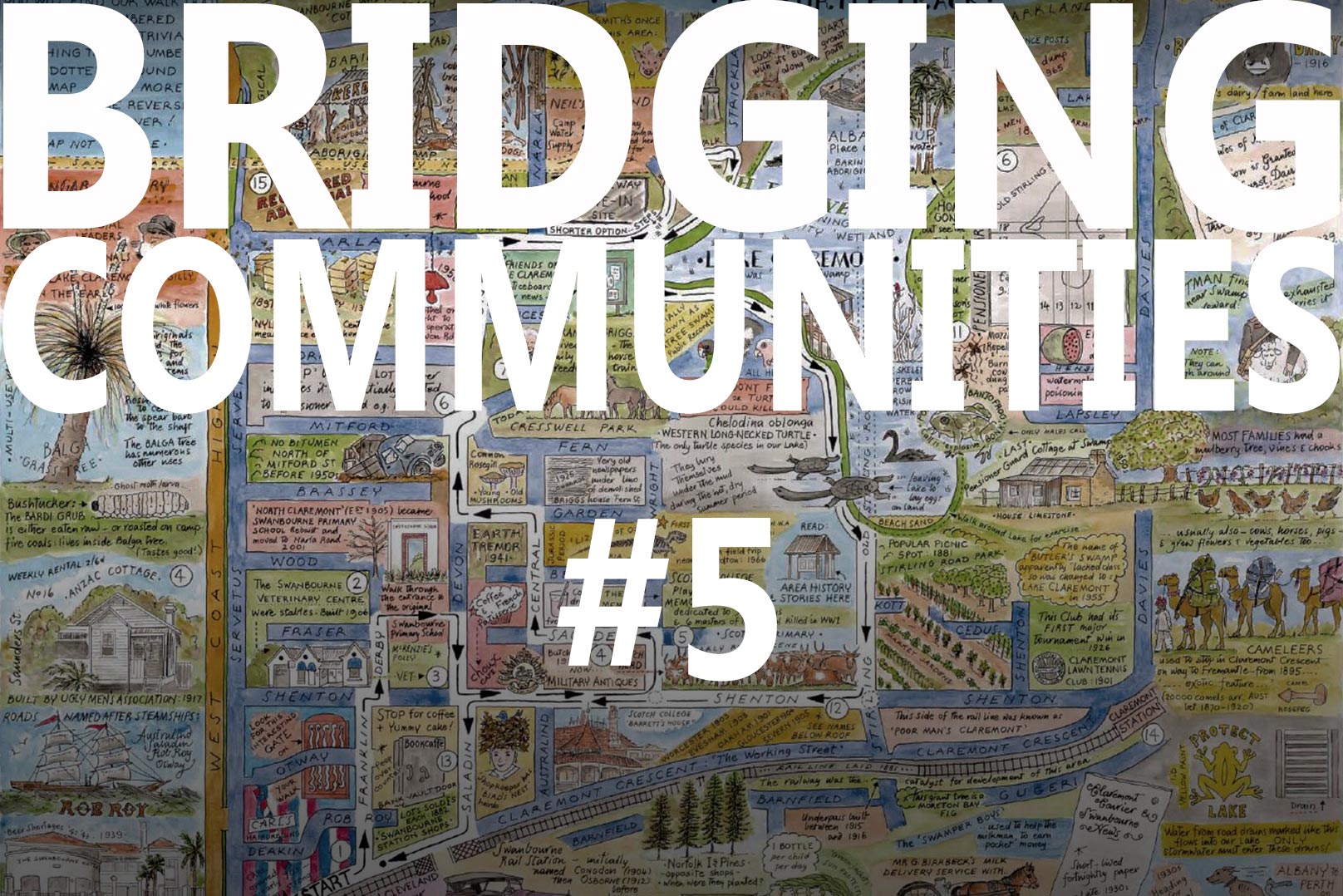Part of a series of posts by Neil Cownie on The Future of Swanbourne Village
This is the first in a series of posts that tease out the issues surrounding any new scheme for a replacement bridge within the Swanbourne Village precinct.
Main Roads WA (MRWA) has released their updated scheme for their preferred option for the replacement bridge at the Swanbourne Village train station (This October 2018 version is seen here).
MRWA states that the existing bridge needs to be replaced to meet with ‘current safety and access standards, as well as clearance requirements for the Public Transport Authority’s rail line’.
The scheme preferred by Main Roads WA sees:
- demolition of the existing bridge
- construction of a new bridge (as an extension of Saladin Street on the northern side over the railway line).
- the bridge on the south side landing at a much lower level, with a ramp at the junction of Railway and Windsor Streets.
Main Roads WA is considering the movement of vehicles across the railway line in isolation of other parameters in the precinct.
Notably the Town of Cottesloe have not yet provided their support for such a proposal as their preference is to achieve substantial dialogue between Main Roads WA and local community with regard to pedestrian access and future master planning of the area. The Town of Claremont provided conditional support for the replacement bridge in this location (the conditions were aligned with what the Town of Cottesloe was hoping to achieve). One of the important conditions from the Town of Claremont was that the existing bridge connection needed to be maintained and enhanced for the use of pedestrian and bicycle use. As the updated Main Roads WA scheme sees the existing bridge demolished, this is a considerable point of difference with the return brief from both councils.
The substantial change in level to the south side of the bridge is evident by the proposed long and winding pedestrian pathway links. These pathways are ‘disconnected’ from the vehicle bridge, resulting in vast areas of unusable land in what is the centre of community and local business. This highlights the need for a sensitive approach, where land use is considered for the areas surrounding the bridge, along with the longer term master plan for future growth in the precinct.
With a local centre that has for years already achieved the desired goals of METRONET, we need to ensure that the proposed replacement bridge does not destroy the very fabric that has led to the success of this transit oriented local centre. It is imperative that we apply the ethos of METRONET to future work on structures such as a replacement bridge to enhance and reinforce the integration of civil structure with the requirements of the local community and village centre businesses.
The current and historic success of the local centre is primarily due to the proximity of the existing bridge to the railway station exists and the resulting connection that the bridge brings with the convenience of pedestrian traffic across the bridge serving businesses on either side.
There should be a community ‘design brief’ for a ‘design led’ solution to all of the issues involved in the precinct centre; not just the issue of Main Roads WA focused on vehicle traffic and replacing a bridge. Master planning any new work in this precinct can improve; bicycle connectivity, reinforce a pedestrian orientated local centre, improve the existing civic space, further unify the divided town centre, improve accessibility and security, and protect and celebrate the historic pathways and crossings.
Consideration of a replacement bridge should be on the basis of ‘town centre design standards’ rather than Main Roads WA standards for traffic.
Here are some concerns with the Main Roads WA scheme that should be addressed by an overall plan.
Creation of a Visual Eyesore
Due to the chosen location of the replacement bridge, combined with the requirement for an additional 800mm of clearance over the train line, there is a much greater difference in ground level to each end of the bridge. This means that the bridge must not only span the railway line, but it must then ramp down to reach the lower road level on the opposite side of the bridge. There is a change in level of in excess of two meters whereas the existing bridge has only a one-meter difference in level at each end. The result is a substantial visual eyesore and a disconnect of road system with the bridge.
Lack of Pedestrian Access & Ramps
The MRWA scheme does not reflect the historic or direct pathway pedestrian links required by the community and train commuters. A narrow pedestrian pathway across the bridge on the western side collects pedestrians from the business centre on the south side of the bridge and delivers them beyond the commercial precinct on the north side. This creates a complete disconnection between commercial areas to either side of the railway line. Access to the train station in the MRWA scheme is convoluted which would ultimately result in commuters seeking short cuts and leading to risky behavior.
To the eastern side of the bridge is a spiraling pedestrian ramp that will be undesirable to pedestrians. The nature of the long spiraling ramp will result in a longer travel distance for pedestrians that will again see pedestrians taking risks in seeking alternative faster and more direct pathways. Keep in mind that many of these pedestrians will be school children who are not averse to taking risks.
Disconnecting the Village
The existing bridge feels more like an extension of the adjacent road system and commercial centres to each side than it does a bridge. The MRWA scheme completely ‘disconnects’ itself from the village, commercial centres and adjacent roads. The MRWA scheme sees long winding ramps to the northern side of the railway line serving pedestrian access to the level of the train station. The proposed western side ramps see the valuable land opposite the commercial centre eradicated. This strip of land proposed for ramps in an important pedestrian access way for users of the commercial area. The ramps not only hinder access to the shops but also limit opportunities to have casual parking bays serving the shops in this otherwise convenient location.
Concrete Barriers and more Concrete Barriers
The MRWA scheme sees continuous concrete barriers to the side of the bridge extending beyond the limits of the bridge unnecessarily. Further concrete barriers exist centrally between lanes across the bridge resulting in a hostile, utilitarian feeling environment. The Main Roads WA scheme seems more concerned with compliance to Australian Standards and the blinkered needs of vehicles than concerning itself with the needs of the rest of the community. Any scheme within the village centre should see a priority to pedestrians above vehicles with the design that of ‘town centre urban standards’ and not designed to vehicle traffic standards.
Demolition of Heritage
The MRWA scheme indicates that the existing bridge is to be demolished. The existing bridge has heritage significance and the location of the existing bridge is pivotal to the survival and viability of the local centre.
Lack of Access to the Train Station
The MRWA scheme does not appropriately address access to the train station.
Wasted Land
The MRWA scheme for the replacement bridge has been ‘engineered’ in isolation of any engagement with master planning in the precinct. This precinct has large areas of wasted open space to either side along the railway line reserve. This is surely an excellent opportunity to master plan for the future development of this area. Prior to looking at the ‘fine grain’ of a specific bridge design, there should be master planning of the precinct. Main Roads WA should not be ‘leading the way’ here, is not their role.
These large areas of open space left over adjacent to the bridge seem completely unaccounted for due to Main Roads WA working in isolation. The future planning of these ‘left over’ spaces in critical to the success or failure of the proposed bridge redevelopment. Resolution of the adjacent areas should not be an afterthought.
Main Roads WA is holding a ‘community information session’ at 6pm on Wednesday 24th October at the Claremont Football Club function room. This meeting is open to all members of the public.
Visit: Congdon Street Bridge Replacement Project
Have Your Say: send feedback on the Congdon Street Bridge Replacement
A Better Way
We need better planning and a better way for our Swanbourne Village.
View A Better Way for Swanbourne Village
Go back to the The Future of Swanbourne Village
The Bridging Communities Series
- #0 The Precinct - Swanbourne Bridge
- #1 Old Swanbourne Bridge
- #2 Third Avenue Bridge
- #3 Seventh Avenue
- #4 Mt Lawley Station Bridge
- #5 Swanbourne Aboriginal History
- #6 Swanbourne European History
- #7 Swanbourne Hotel
- #8 Koombana Bay Bridge
- #9 BIG Bridge Copenhagen
- #10 Circle Bridge Copenhagen
- #11 Tulhus Bridge - Erik Andersson
- #12 RV73 Bridge - Erik Andersson
- #13 The Architect Bridge - Erik Andersson
- #14 Ruyi Bridge - China
- #15 Cork Ireland Bridge - O'Donnell + Tuomey Architects
- #16 Bat Bridge - Next Architects
- #17 Leederville & Claremont Bridges
- #18 Dawson's Garden Centre
- #19 Swanbourne Village
- #20 Cottesloe Central Bridge
- #21 Showgrounds Bridge
- #22 Art Overlays
- #23 Swanbourne Village - Parameters - Levels
- #24 Swanbourne Village - Parameters - Community Hub
- #25 Swanbourne Village - A Better Way
- #26 Swanbourne Village – Call in the Cavalry
- #27 Sydney Light Rail Bridge
- #28 Hamilton Street Bridge, Subiaco
- #29 Compare the Pair
- #30 Opportunity not a Barrier
- #31 Rose Garden Bridge
- #32 Somers Town Bridge
- #33 Swanbourne Village – Original Bridge
- #34 Bayswater Bridge
- #35 Main Roads WA Scheme
- #36 NCA Scheme – The Big Picture
- #37 NCA Scheme – Master Plan
- #38 NCA Scheme – Relocated Dawsons Garden Centre
- #39 NCA Scheme – New Built Form
- #40 NCA Scheme – A New Community Pedestrian Bridge
- #41 NCA Scheme – Proposed Train Station Precinct
- #42 NCA Scheme – Swanbourne Village Market Day
- #43 NCA Scheme – Pedestrian environment
- #44 NCA Scheme – Cultural overlay
- #45 NCA Scheme – Centre of Excellence for a Sustainable Future
- #46 NCA Scheme – An Alternative Pedestrian Bridge Design

